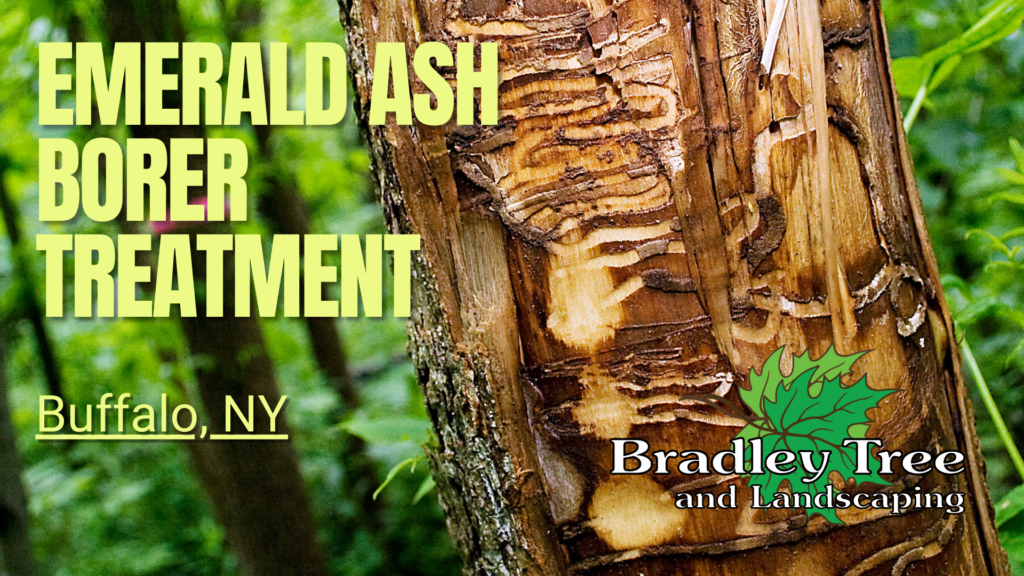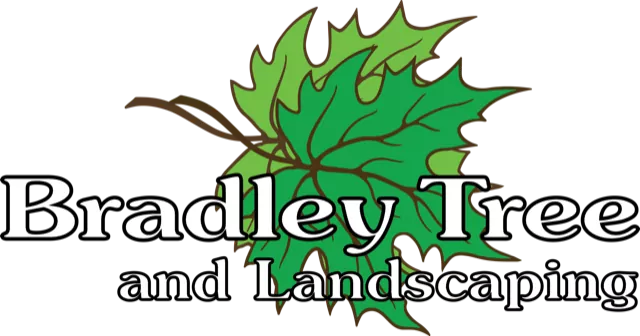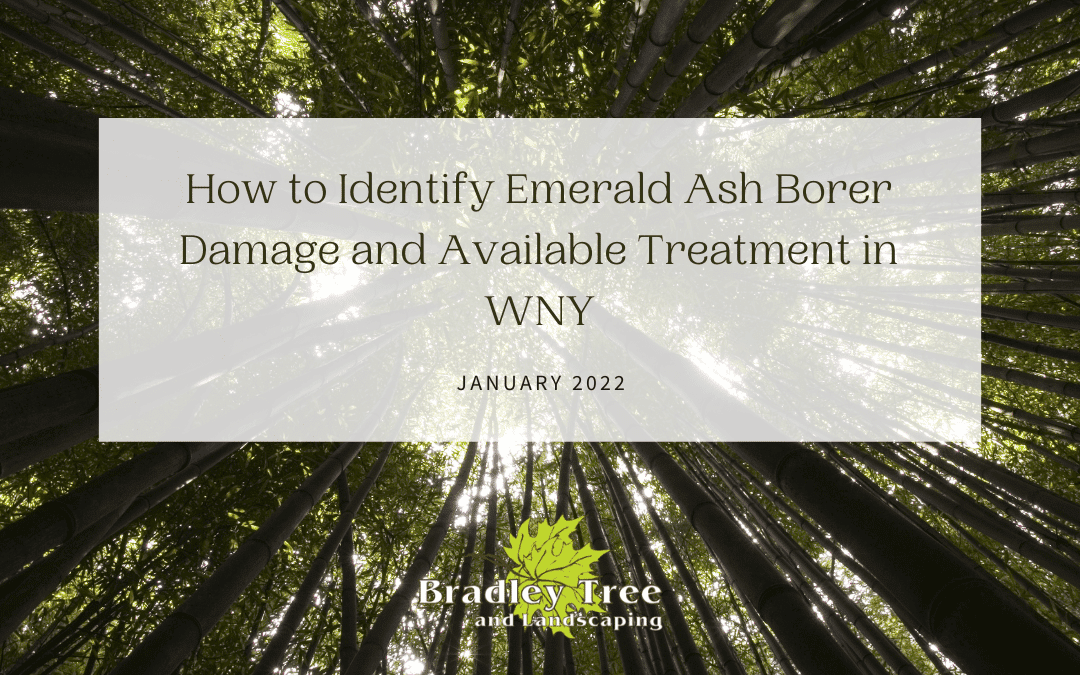Welcome back to the blog! Today, we wanted to get back to an important topic to us that we’ve taken some time away from. How do ISA-certified arborists identify, isolate, and treat damage caused by emerald ash borer beetles in not just WNY, but all over?
One way to start is to go over what we expect from a healthy ash tree. That way, the signs of damage are more apparent to you. Healthy trees have full crowns, elongated branches, and bark that’s held so close to the trunk it may as well be stuck.
Identifying Emerald Ash Borer Damage in WNY

Identifying emerald ash borer damage in WNY is the first step in starting treatment and limiting the spread of invasive pests. We have an incredibly in-depth look at the signs and symptoms of damage caused by these beetles for you here. However, in case you missed it or want a refresher, we can go over the big points again.
Signs of Damage:
One sign a tree could be host to EABs is the larval galleries carved into the tissue of the tree by the larva stage of this insect. Heavily infested trees will have these scars visible as you peel the bark back. A second sign could be leaf notches, chewed by the adults that feed on the ash tree’s leaves. When the damage reaches a certain threshold, the canopy can appear to be thin and ragged. Another sign is the D-shaped holes chewed into the bark as the larvae age into adults and leave the tree. These holes are unique to the group EABs belong to, so please call an ISA-Certified Arborist right away to consult your options with an expert.
Symptoms of Damage:
There are a few symptoms a sick tree will exhibit. They can develop epicormic shoots, also called suckers. You typically find them around the roots and trunk from a stressed tree, but sometimes in the crown or on large branches. Further signs of damage that your plant could need emergency tree care are cracks or splits in the bark of the tree, caused by the larval galleries underneath. EAB infestations can also cause yellow foliage, dead branches, and thin crowns.
Treatment for Emerald Ash Borer Damage

The best plant healthcare for trees is preventative measures for healthy ash trees. There are some insecticides and pesticides that target and eliminate various life stages of Emerald Ash Borers. Persistent application of systemic insecticides by certified professionals should provide consistent protection against EABs.
All ash trees within 15 or so miles of a confirmed EAB site are at risk. If you have ash trees within this risk zone, contact a licensed arborist immediately. We can consult about your options surrounding preventative measures. If you have a tree that has been infected, as long as the crown has experienced less than 30% dieback it could recover following treatment.
Systemic applications via injection are preferred to treat emerald ash borer infestations. However, there are other methods when that isn’t available or possible. Extra degrees of caution are required when working with other methods of treatment to ensure the insecticides don’t transfer to non-target plants.
Let’s Try To Save The Ash Tree!
Remember! Stopping these invasive insects is instrumental to keep the ash tree alive. Major League Baseball has already gotten rid of Ash bats, sans one player, due to the shortage caused by EABs (The Athletic goes very in-depth into this here, as does the Philadelphia Inquisitor here). We already lost the American Chestnut Tree, we don’t want the ash species to be next. Over 10 million ash trees have been killed by EABs since their introduction to the US, so stopping their spread is essential.
Ash is valuable for its uses in baseball bats, hardwood flooring, lumber, furniture, shipping pallets, firewood, and as a shade tree among other uses. Even though the MLB doesn’t use Ash for its bats, plenty of minor leagues do. It’s estimated that approximately 8% of New York’s trees are Ash species. It’s also assumed that they are a contributing factor to the state’s $9 billion forest-based recreations and tourism industry.
Contact Us!
Bradley Tree and Landscaping is the premier tree care service of Buffalo, NY. We’re ISA-Certified Arborists who love trees and educating our customers. Make sure to stay up to date with our blog and social media to follow along with the arbor fun! Check out our expert services while you’re here and watch a video or two to learn something new.
If you’ve enjoyed working with us, please fill out a Google Review of your experience. If you haven’t, then get in touch with our licensed arborists by calling us or filling out an online contact form today!

